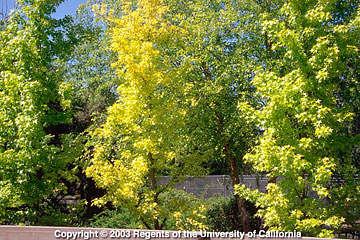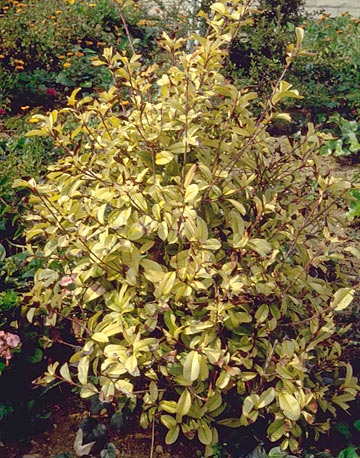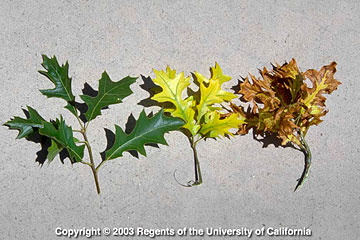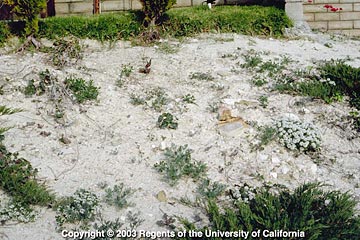Salinity Management Guide
Problems involving trees, shrubs, and ground covers
Problems related to calcareous soil (high soil pH)

Photo courtesy of Larry Costello. |
Symptoms: Chlorotic leaves on sweetgum tree. Diagnosis: The soil is calcareous, inducing iron deficiency in this liquidamber. Solutions: Apply iron chelate fertilizer or reduce soil pH by applying an acid-producing amendment (the latter helps to convert iron already in the soil into forms of iron that are more available to the plant). |

Photo courtesy of HortScience, Inc. |
Symptoms: Severe chlorosis and bleaching of photonia. Diagnosis: The soil is calcareous, inducing iron deficiency. Solutions: Apply iron chelate fertilizer or reduce soil pH by applying an acid-producing amendment. If that fails, replace the plant with one that's more tolerant of a high soil pH, such as escallonia or California holly grape. |

Photo courtesy of HortScience, Inc. |
Symptoms: Chlorosis and necrosis of leaves on pin oak. Diagnosis: This pin oak, an acid-loving species, is growing on alkaline soil. Solutions: Replace tree with a more alkaline-tolerant tree, such as silk oak or coast live oak. |

Photo courtesy of HortScience, Inc. |
Symptoms: Heavy deposits of carbonate salt are visible; some plant species exhibit damage. Diagnosis: The soil is highly calcareous, as indicated by the white carbonate surface and calcite rock fragments. Solutions: Plant alkalinity-tolerant shrubs, such as abelia, escallonia, spreading juniper, or dwarf nandina. Consider also the groundcovers trumpet vine, clematis, English ivy, or honeysuckle. For herbaceous species, consider African daisy, calendula, California poppy, or chrysanthemum. |
| « Previous page | Next page » |